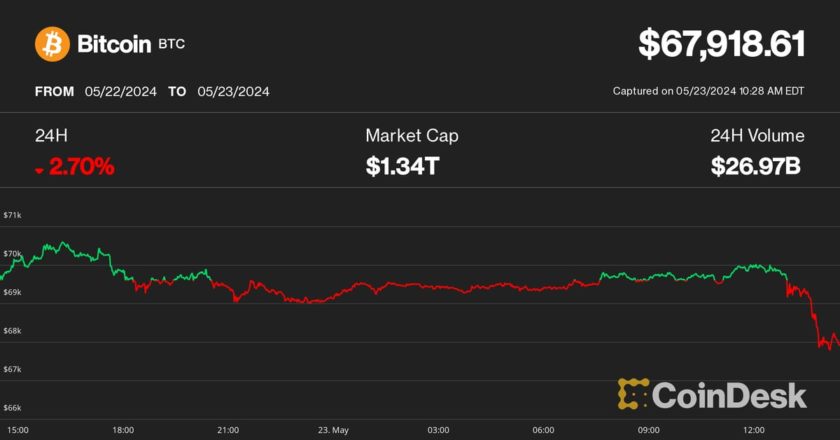Bitcoin once promised that it would help realize the lofty goal of making individuals “their own bank.” To understand the many services that banks truly provide is also to realize how preposterous this claim was in 2008, when Bitcoin’s white paper made it. More than a decade later, the grandfather cryptocurrency is still on the peripheries of traditional finance, yet the decentralized industry that it has spawned can indeed replicate many financial services on the blockchain, all of which were formerly exclusively in the realm of banks.
Is DeFi banking?
Decentralized finance (DeFi) has quickly become a buzzword. By allowing people to connect to new decentralized lending, exchange, savings and other DeFi platforms, blockchain can provide a cryptocurrency alternative to traditional banking services, and those who are comfortable operating in this ecosystem are therefore able to wield their assets with greater fungibility. Make no mistake: DeFi is not banking, as it only mimics banking functions and is still unable to provide the other thing banks are valued for — i.e., security. Lorenzo Pellegrino, CEO of popular online payments platform Skrill, told Cointelegraph:
“Many companies claiming to be banks operate in the cryptocurrency ecosystem, however almost all would find it hard to maintain that title in a regulated space. They use this terminology as it implies a level of safety and regulation found in the wider financial world, something that will most likely be missing from their product.”
Accordingly, these applications are not able to accept deposits nor to withdraw to a bank, which is a red flag. They do not defray the liability through legal precedent, and there are no investor-protection schemes covering the tokens if a smart contract goes bust. As mere footnotes to regulations that have yet to fully materialize, “cryptocurrency banks” — in the truest sense — are few and far-between. But they do exist, as blockchain solutions have matured in the hands of teams from both sides of the finance industry and as regulators begin to learn more about the revolution knocking at their door.
What’s a crypto bank?
Crypto banks are banking institutions that engage in the standard range of money-related activities like deposits and withdrawals, savings, lending and borrowing, and investing in a wider range of instruments and markets. While this also describes a standard bank perfectly, crypto banks have integrated cryptocurrency into these financial functions. They’ve also gained legality in the eyes of local financial watchdogs.
The challenge facing blockchain is twofold: It must be in a tolerating regulatory environment and have enough local talent to provide mature, trusted solutions. In places with progressive policymakers such as Germany, businesses and institutions holding fiat money and fiat-money-based assets can easily participate in the decentralized economy through a crypto bank. These kinds of crypto banks, such as Bitwala and Spot9, are essentially the skeleton of what will one day be a bridge between the segregated fiat and crypto economies, which is only now beginning to emerge.
Regulated by Germany’s Federal Financial Supervisory Authority, Bitwala deposits are insured by the German Deposit Guarantee Scheme up to 100,000 euros (about $113,000), just as they are for other banks regulated in Germany. Its partnership with European Union-regulated SolarisBank ensures that account holders are able to do with Bitwala the same as what they’d do with their regular bank account — i.e., get paid, pay rent and bills, exchange currencies, send interbank payments, and store money in both fiat and cryptocurrencies seamlessly.
A convincing yet futile facsimile
Due to the unique capabilities of blockchain finance, many of the largest centralized crypto firms are able to offer bank-like services for other enterprise-level businesses, even where regulations haven’t taken shape. In the United States, for example, the Securities and Exchange Commission hasn’t yet indicated that these businesses can integrate with the banking system, and for now, they’re essentially investment funds. Coinbase Custody is one of the most sophisticated examples, but it can only play being a “bank” until regulators give their approval.
Serious investors and businesses preferring to operate in full view of tax authorities and regulators will need to do the reporting legwork necessary to legally invest fiat into the tokens available on Coinbase Custody. It allows people with large investments in the crypto market to avail from segregated cold storage while enjoying seamless integration with the Coinbase Pro exchange, insurance for deposits, staking tools where available, customized reporting and third-party auditing.
Burgeoning BTC banks worldwide
What’s missing from Coinbase’s custody solution? For U.S citizens, Coinbase provides trustworthy storage and exchange, but one cannot pay bills from a Coinbase account nor receive a salary to it. When going to the movies in the U.S., crypto can be used as payment or to repay a friend (who purchased your ticket) by sending money to their bank account. A user would first need to cash out Bitcoin (BTC), for example, and send it from Coinbase to a connected bank, then from the connected bank to the user’s own bank. This is because, without regulatory approval, fiat can be turned into crypto (and vice versa), but fiat and crypto do not belong to the same definition of money as it pertains to banks. Clearly there are still obstacles ahead. Skrill’s Pellegrino opined:
“While cryptocurrency will definitely play a large role in the future of payment rails, we believe that they will be complementary to the current systems, rather than in full out competition. Established payments companies like ours will be key in helping this adoption.”
It becomes more apparent as one realizes that fitting crypto to the current monetary system is the same as trying to put a square peg into a round hole. The most advanced platforms are trying their hardest to render the entrenched competition and regulators obsolete, but they forget that without transferability, one of the five properties of currency is missing from crypto.
Tokens have scarcity, durability, divisibility and fungibility down pat, but regulators are able to force a stalemate on transferability. This is why advanced platforms such as MyCryptoBank.io can use fiat-pegged stablecoins for free cross-border transactions, spending and investing — but the second a user decides to hold real USD or equities (and not blockchain derivatives), there is a problem. Regulators can prevent this movement of cryptocurrencies and create roadblocks for individuals to use their own money for their own purposes, or even transfer their funds into fiat currencies.
Banking is more a label than a verb
People want to be able to use their money for everything, not 90% of everything. Derivative instruments or precariously stacked debit card solutions built on tenuous partnerships aren’t enough. A recent McKinsey report concurs. Without regulatory approval, all blockchain finance is subject to the underlying fiat market’s three to five day settlement time. According to the report, “If counterparties were to exchange cryptocurrency assets (digital currencies that do not need a central regulating body) rather than fiat currencies, for example, payments could be made and settled in minutes via blockchain, rather than in days as with current systems.”
Slow steps toward the universal recognition that cryptocurrency can store and transmit value are being made, but it’s slower where progress counts most. As cryptocurrency finds its legs in the coming years, integrated economies with the most liberal banking authorities will benefit most. With the oldest cryptocurrency still on the fringes of finance, it’s safe to predict that mainstream acceptance is still a ways off.




